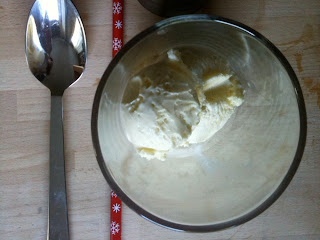Third year of medical school is really hard. From the incubated cocoon of the first two years, spent almost entirely in the classroom, one is thrust (without adequate preparation; though in retrospect what really could or would constitute adequate preparation?) into the fast-paced, hospital-based world of the wards. It's pretty different, and I don't like change very much to begin with (though JB probably likes it even less).
I was thinking about third year of med school a lot last month while I was in the ICU at our county hospital. The dearth of new blog posts in April was because the ICU was every bit as busy and tiring as I had thought it might be. (The dearth of blog posts in May has no such reason behind it. Sorry.) Similar to last month, third year of med school is busy and tiring. Instead of having weekends off and knowing what you're supposed to study and know, you are bossed around, unable to make plans because your schedule is no longer your own, and saddled with the realization that you've worked hard for two years but don't know anything about actually taking care of patients. This fugue state ultimately improves, but not without persisting for a while.
On my core general surgery rotation, the second rotation of my medical school career, I learned a lot. First and foremost, I learned how to retract. I learned how to work on a team, or, as my chief put it one time, how to play well in the sandbox. I also learned how to respond to pimping (wishing all the while that I'd paid more attention in gross anatomy), and how to stay up all night (complete with 3am pre-rounding). I even began to learn how to take care of patients. Nonetheless, I frequently came home grumpy, and exhausted, and convinced that I did not want to be a surgeon when I grew up.
My solace during these rough transitional two months? It was simple and delicious and satisfying: root beer floats.
I would come home after a long night, eat some cereal, watch a Tivo'ed "Jeopardy!", and quickly fall asleep on the couch. In the early afternoon, I would wake up starving, and then it was time for a root beer float. I started with two or three scoops of ice cream in a pint glass, and then added some root beer, poured carefully down the side so that it wouldn't get too foamy after mixing with the ice cream. I then slurped some root beer through a straw, ate a few spoonfuls of ice cream, and poured in some more root beer; this regimen was repeated until the glass was empty and my belly was full. I drank enough floats that I even bought reusable, dishwasher-safe straws to decrease the waste.
Little did I know what a transformative rotation surgery would end up being. I started a number of post-call traditions during those two months, including the "Jeopardy!" and the couch-sleeping. The afternoon root beer floats, though initially popular, fell by the wayside about a year later, well before I started residency and its plethora of long nights in the hospital.
Only recently (with B's assistance) did I realize why I stopped drinking floats: the summer following my surgery rotation brought the delivery of our ice cream machine. Though the advent of the ice cream machine brought many new and delicious flavors into our freezer, making vanilla seemed, well, too vanilla. Why not make salted caramel? Or fig? Or mint chocolate chip? They were quick variations on the vanilla base, and seemed a little more special than a flavor so easily available at the grocery store. And so, without vanilla ice cream at hand in the freezer, root beer floats quickly became a distant memory.
Thank goodness, then, for the ICU-induced stress so reminiscent of third-year medical school. Without it, I would never have come back to root beer floats. I don't think they need homemade ice cream to be delicious, but they definitely need top-notch root beer. While my family used to be IBC die-hards, we have since moved to the Virgil's camp. The best price and availability are at Trader Joe's.
I don't think this post will convince anyone to go to medical school (it's not that bad, really, I swear), but maybe it'll convince some of you to try root beer floats again. They're not just for kids, and they sure do hit the spot when you come home from the hospital after a long day or night. Enjoy!
Root Beer Float
Time: 5 minutes active and total
3 scoops of high-quality vanilla ice cream (you can make your own, or use a premium brand like Haagen-Dazs)
12-oz bottle of cold root beer (Virgil's is my favorite)
In a pint glass or tall soda glass, place three scoops of ice cream. Add root beer slowly, down the side of the glass, to avoid foaming. Serve with a long spoon, a straw, and the bottle with any remaining root beer.







This brings back fond memories of that three dessert meal with floats, ice cream, and strawberry rhubarb pie. How come the book link takes you to Amazon and not Discovereads?!
ReplyDeleteI had no idea you switched from IBC. I will have to try this Virgil's. Also, is there any problem with making a root beer float with a different type of ice cream?
ReplyDeleteRoot beer floats, for some reason, call out for vanilla to me. I know some people like chocolate, though, and I imagine that would be delicious!
ReplyDelete